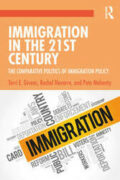
Rating: 7.6/10.
Digital Empires: The Global Battle to Regulate Technology by Anu Bradford
Book about models and recent trends in tech regulation — it is written in a fairly academic tone but contains many insights. I found it somewhat heavy and stopped reading about halfway through the book. The tech world is dominated by three governance models: the American model, where regulation aims to foster innovation and market-driven growth; the European Regulation Framework, which aims to protect data privacy of users; and the Chinese model, which emphasizes state control of technology and uses technology to aid in surveillance, making it the most different from the other two.
The American regulatory framework has been generally light on tech regulation, driven by the belief that regulation is ineffective, kills innovation, and that government control is generally worse than private companies having control. Recently, there has been pressure to increase regulation in America, eg Section 230 is a controversial law that protects platforms from illegal user-posted content, but this leads to abusive behaviors remaining unmitigated.
The Chinese model uses state technology to perform surveillance on citizens and maintain stability in the regime by censoring disruptive opinions or possible protest movements. In this framework, companies must comply or be shut down. Most Western tech companies are blocked by the Great Firewall, and Chinese citizens are generally accustomed to this and have no expectation of privacy. Around 2021, President Xi increased regulations for Chinese software companies, including social media and gaming companies, to increase government control despite the damage to the economy. Hardware companies were seen as more strategic and left mostly unaffected. Tensions with America involving banning Huawei and TikTok are due to fear of Chinese surveillance and the asymmetry of American tech companies not being allowed in China while Chinese companies operate in America.
The third framework, the European model of tech companies, emphasizes user privacy and control over their own data. This framework is less opposed to government control of tech giants to protect what they view as fundamental rights, and they place less value on freedom of hate speech compared to Americans. However, many believe that this regulation stifles innovation, especially hurting small players, and enforcement is uneven with fines structured to be small enough that many times the big tech companies can pay them rather than follow the rules.
The struggle between Chinese and American models: China places strict demands on tech companies to comply with Chinese government requests for data and censorship – they must either comply or leave the market. Apple has had the biggest presence in China, while most other tech giants like Google and Meta have found it too difficult to operate and comply, maintaining very limited presence. America banning TikTok has pros and cons: on one hand relieving the asymmetry of Americans not having access to the Chinese market but not vice versa, and on the other hand spreading the Chinese model of state-controlled governance. This leaves the tech ecosystem more fragmented with different incompatible components.



